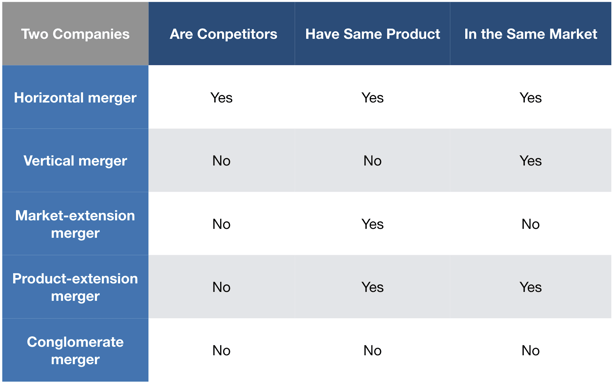In mergers and acquisitions, one of the most misunderstood but critically important elements of business valuation is the concept of owner addbacks. These adjustments, often buried in the financials of a privately held company, can significantly impact how a business’s earnings are interpreted and, consequently, how it is valued in the market.
For both sellers seeking to maximize value and buyers aiming to understand what they are truly acquiring, clear and accurate earnings representation is essential. Traditional financial reporting often paints an incomplete picture, especially for closely held businesses where personal and discretionary expenses may be embedded in the operating costs. Owner addbacks, when identified and presented transparently, help remove this distortion. They provide a clearer view of a business’s normalized earnings, allowing for more accurate valuation and negotiation.
At its core, this article aims to unpack what owner addbacks are, why they matter, and how to approach them with the level of scrutiny, honesty, and professionalism that a successful transaction demands.
What Are Owner Addbacks?
Owner addbacks refer to the non-essential, discretionary, or personal expenses that a business incurs on behalf of its owner, which, while legally recorded, do not contribute to the company’s core operations. These are not fictitious or improperly recorded items; rather, they are legitimate line items that reflect the way private businesses often operate. Still, they do not necessarily represent the costs a future owner would need to assume to maintain the same level of business performance.
Examples range from personal vehicle expenses charged through the company to owner-specific healthcare premiums, club memberships, or even charitable donations aligned with the owner’s personal affiliations. In each case, these costs are subtracted from profits for tax purposes but should be added back when calculating the company’s true cash flow.
Understanding the distinction between a true operating expense and a discretionary owner benefit is key. A salary paid to a salesperson, for instance, is necessary for operations; however, an above-market salary paid to the owner who is not essential to day-to-day operations may be viewed differently. The same logic applies to other benefits or expenses that serve the owner’s lifestyle rather than the company’s performance.
By identifying these expenditures and adding them back to the company’s net income, sellers create a clearer depiction of the business’s operational cash flow, a crucial figure that reflects the real earnings power of the enterprise. This “normalization” of earnings is especially relevant in middle-market M&A, where privately held businesses may have less standardized accounting practices and greater latitude for discretionary spending.
Why Addbacks Matter in Business Sales
The importance of owner addbacks becomes most apparent during the sale of a business. In preparing for a transaction, sellers must present their company in the best, yet most honest, light. Properly executed addbacks elevate the business’s adjusted EBITDA (Earnings Before Interest, Taxes, Depreciation, and Amortization), a key metric used by buyers, bankers, and valuation experts to assess a company’s worth.
A higher EBITDA, when backed by legitimate and well-supported addbacks, can result in a significantly improved valuation. In many industries, businesses are valued as a multiple of EBITDA. Therefore, even modest addbacks, if accurate, can translate to hundreds of thousands or even millions of dollars in valuation difference.
For buyers, these adjustments help uncover the business’s sustainable cash flow. By removing non-operational or non-recurring expenses, the buyer gains a clearer understanding of how the business will perform under new ownership. This clarity reduces uncertainty, which in turn can reduce perceived risk and increase willingness to pay.
However, credibility is everything. Buyers will not accept addbacks at face value. Each line item must be defensible and supported by documentation and logic. Overreaching, claiming operational expenses as personal, or attempting to inflate EBITDA through aggressive or dubious addbacks, can erode trust and jeopardize the transaction altogether.
Common Examples of Owner Addbacks
While every business is unique, certain types of discretionary spending recur frequently in private company financials. Understanding how these costs are treated in valuation discussions is essential for both sides of a transaction.
One of the most common categories is owner compensation. In many small to mid-sized businesses, owners pay themselves salaries that either exceed or fall short of market rates. In the case of an above-market salary, the excess can often be added back. Similarly, health insurance premiums or retirement contributions paid on behalf of the owner or family members not involved in the business may also qualify.
Personal travel expenses are another frequent candidate. It’s not unusual for business owners to combine personal travel with professional obligations, blurring the line between business necessity and personal preference. If a trip to a conference in Paris includes five extra days of vacation, the non-business portion may be added back.
Vehicle expenses often fall into this gray area. A company-owned car used primarily for personal purposes, or car insurance and maintenance costs for a vehicle unrelated to operations, may be reclassified during the addback process.
Home office costs can also qualify, especially when the business pays for services or equipment that primarily benefit the owner’s personal setup. Internet, utilities, or renovations billed to the business but used for personal convenience must be carefully examined.
Finally, discretionary expenses such as club memberships, entertainment, or charitable giving tied to the owner’s personal interests rather than client development or marketing are legitimate addback candidates. These may reflect the owner’s values or lifestyle, but they are not integral to the company’s profitability.
Consider a SaaS company with $35 million in annual recurring revenue (ARR) and $6.2 million in reported EBITDA. During financial due diligence, the deal team identifies approximately $950,000 in legitimate add-backs, including one-time legal fees related to an IP dispute, a discontinued marketing initiative, excess founder compensation, and non-recurring contractor costs associated with a product sunset. After these items are properly documented, the company’s adjusted EBITDA increases to $7.15 million. Given that SaaS businesses of this scale often trade at higher multiples, such as a 10× EBITDA multiple, the valuation impact is substantial: the unadjusted value of $62.0 million increases to $71.5 million when adjusted EBITDA is applied. This $9.5 million difference underscores the importance of rigorous add-back analysis in SaaS M&A, where recurring revenue quality and clean financial statements materially influence valuation outcomes.
Documentation and Justification
The integrity of any addback claim hinges on the strength of its documentation. Buyers and their advisors will carefully review financial statements, bank records, invoices, and even credit card statements to verify each adjustment. Sellers must anticipate this scrutiny and prepare accordingly.
Well-organized, transparent financials not only increase the likelihood of a successful sale but can also accelerate the transaction timeline. When a seller provides detailed justification for each addback, accompanied by source documents and logical explanations, they signal credibility and professionalism. This transparency inspires confidence in the buyer, minimizing delays during due diligence and reducing the likelihood of post-offer renegotiations.
In contrast, vague or poorly substantiated claims can raise concerns about the business’s overall financial discipline. If documentation is missing, inconsistent, or unclear, the buyer may push back or reduce their valuation to hedge against unknown risks.
Best practices include working closely with accountants and legal counsel to ensure each claimed addback is appropriately categorized and justified. Ideally, this process should begin well before the business is brought to market. By conducting a pre-sale financial review, sellers can identify and correct inconsistencies, strengthen their addback narrative, and prevent surprises during the diligence phase.
The Buyer’s Perspective
Buyers approach owner addbacks with a discerning eye. Their primary goal is to assess whether the claimed earnings adjustments are reasonable, sustainable, and applicable under new ownership. A buyer wants to understand what the business will look like once personal expenses are removed and what, if any, new costs will need to be added to maintain performance.
For instance, if the current owner acts as the general manager and pays themselves below-market wages, the buyer will likely need to hire a replacement at fair compensation. That future salary may offset any addbacks made to reduce the current owner’s compensation. Buyers will also evaluate whether addbacks represent true one-time expenses or if they are recurring and integral to the operation.
Exaggerated or unjustified addbacks can become a point of contention. If a buyer perceives that the seller is trying to “game” the numbers, confidence can erode quickly. In worst-case scenarios, these disputes can result in discounted offers or lead to the deal falling apart altogether.
This is where experienced M&A advisors and financial professionals play a critical role. Buyers often rely on these experts to validate addback claims, challenge unsupported assumptions, and determine a reliable adjusted EBITDA on which to base valuation and offer terms.
Avoiding Mistakes and Misrepresentations
Sellers must exercise caution and integrity in how they present owner addbacks. Common mistakes include double-counting expenses, misclassifying necessary business costs as discretionary, and failing to distinguish between personal and operational expenditures. Even unintentional errors can raise questions about the reliability of the broader financial picture.
At its worst, misrepresentation, intentional or not, can expose sellers to legal liabilities, damage their professional reputation, and sabotage what might otherwise have been a favorable transaction. Precision, honesty, and transparency are the guiding principles that should shape the addback process.
Working with seasoned advisors who understand the nuances of M&A accounting can prevent these pitfalls. These professionals not only help clarify which addbacks are appropriate but also guide how to present them effectively to maximize value without compromising credibility.
Conclusion
Owner addbacks are far more than technical accounting entries; they are a strategic tool for uncovering the true value of a business. By accurately identifying and transparently presenting discretionary expenses, sellers can reveal their company’s true earnings potential, providing buyers with a clearer and more trustworthy financial picture.
For sellers, the process demands diligence, honesty, and professional support. For buyers, it offers a pathway to understanding what lies beneath the surface of the financial statements. In both cases, the quality of the addback analysis can significantly influence the outcome of a transaction.
Versailles Group has been helping business owners navigate this process with precision and discretion for decades. With deep expertise in middle-market M&A, our team understands how to evaluate, structure, and position companies to achieve the best possible results. We provide personalized, confidential guidance through every step of the transaction, including the critical process of identifying and justifying owner addbacks.
Whether you're planning to sell now or in the future, it's never too early to start a conversation with an investment banker. Reach out to Versailles Group to find out how we can guide you through a strategic and successful M&A transaction.
Written by Don Grava
2 December 2025
Versailles Group, Ltd.
Versailles Group is a 38-year-old boutique investment bank that specializes in international mergers, acquisitions, and divestitures. Versailles Group’s skill, flexibility, and experience have enabled it to successfully close M&A transactions for companies with revenues greater than US$2 million. Versailles Group has closed transactions in all economic environments, literally around the world.
Versailles Group provides clients with both buy-side and sell-side M&A services and has been completing cross-border transactions since its founding in 1987.
More information on Versailles Group, Ltd. can be found at
For additional information, please contact
Founder and President
+617-449-3325









-jpg.jpeg?width=1920&height=1080&name=Thinking%20of%20Selling%20(1)-jpg.jpeg)







